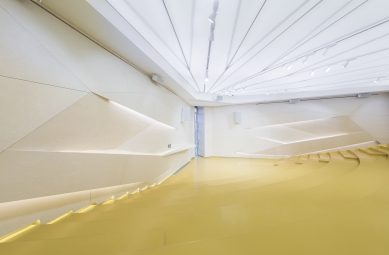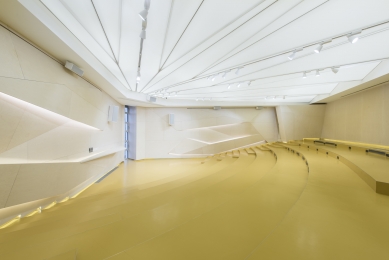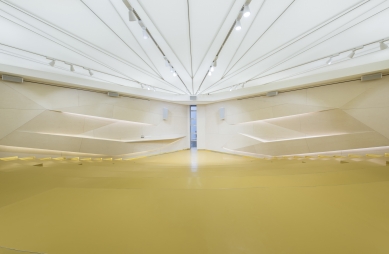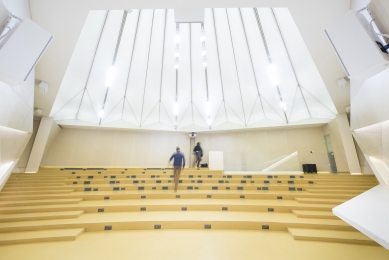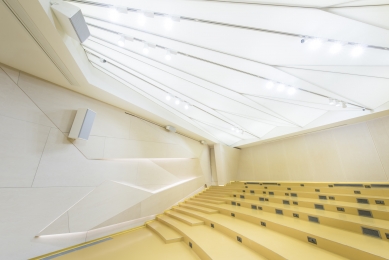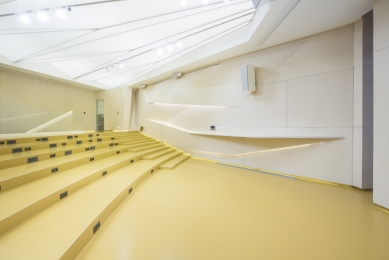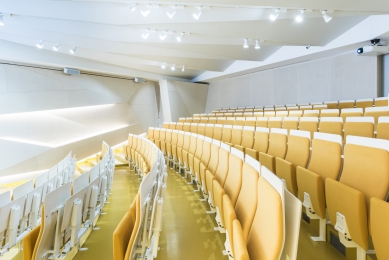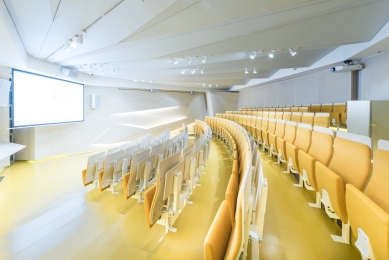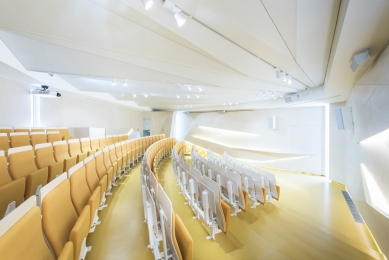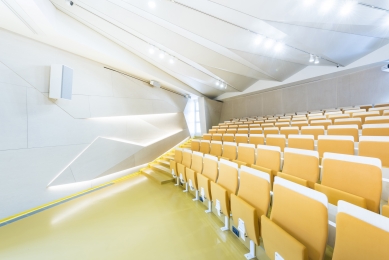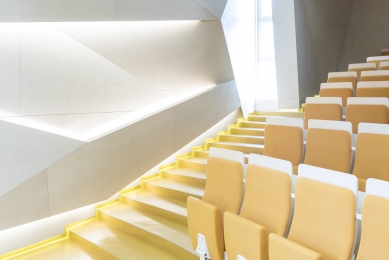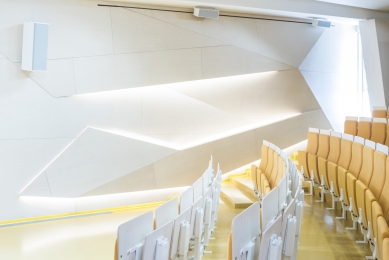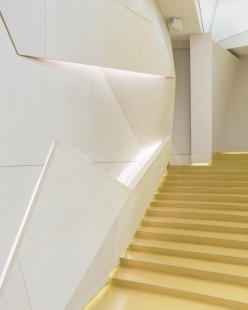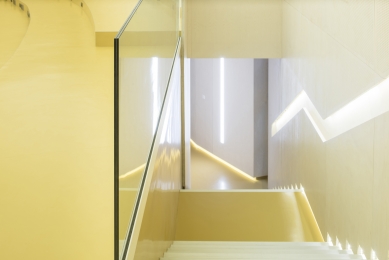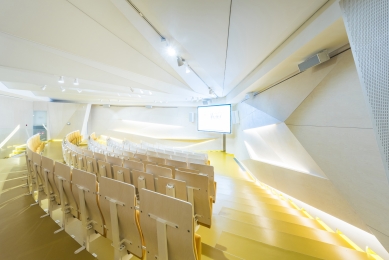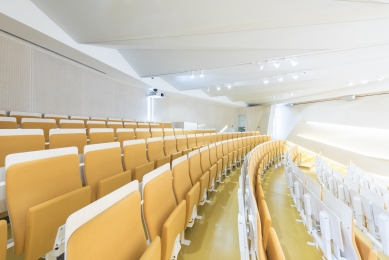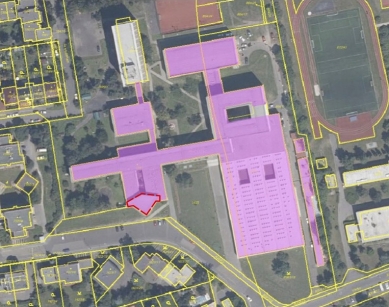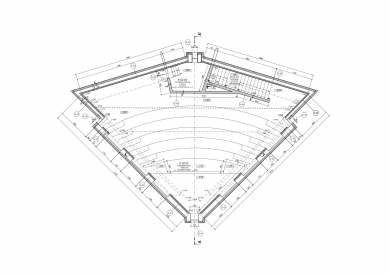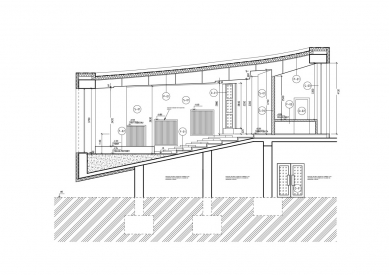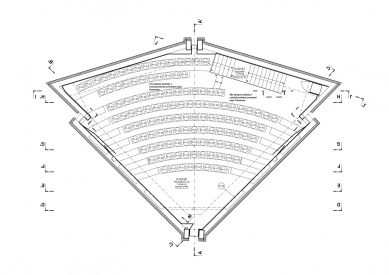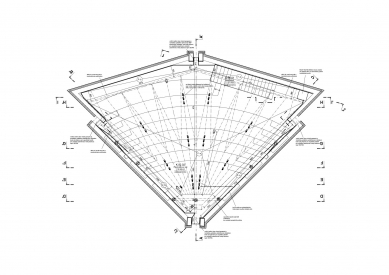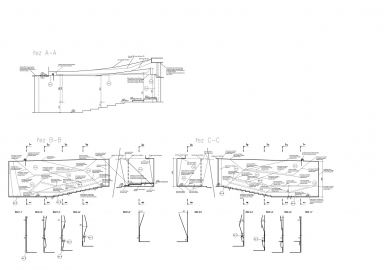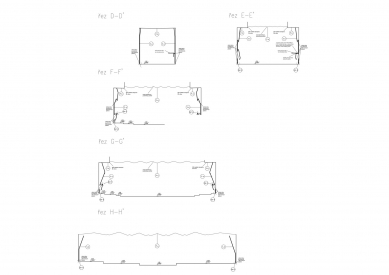
Reconstruction of the multifunctional hall of SPŠ Na Třebešíně

The Secondary Industrial School Na Třebešíně was built around 1973 as a modern experimental complex, which also includes a conference hall. The proposed modifications aimed to revitalize the hall's space to meet current requirements. New acoustic surfaces, ceilings, and furniture equipment were designed for the space. The methods for projection and audio communication, as well as the forced air exchange of heat and cooling, were newly addressed. Despite all contemporary renovations, the presence of the spirit of the 70s was felt in the architecture of the campus. Therefore, our artistic solution is influenced by the architecture and applied arts of the 1970s. The main idea is based on an expressive shape solution for the ceiling and walls as two separate structures. The shape of the ceiling derives from the layout of the hall, which is designed in the shape of an "open fan." The ceiling is created from tensioned foil stretched over a spatially shaped aluminum structure. The foil can be illuminated over its entire surface, giving the ceiling a lightness. The walls of the hall are covered with irregularly shaped plywood panels that flow into each other and create polygonal shaped surfaces. The panels are veneered with birch veneer coated with a white translucent glaze, allowing the wood grain to show through. The white toning of the wood gives a more abstract effect and highlights the various orientations of the surfaces. This makes the space appear more three-dimensional. The panels serve both acoustic and aesthetic functions. The seats, including small tables, are also made of birch plywood and are upholstered with fabric in a sand color. The same shade is chosen for the floor made of natural rubber. The hall is equipped with 125 folding chairs and 100 folding tables. It features a controlled intelligent control system that allows for the management of roller blackout curtains, dimming, and lighting as well as audio-visual production.
IO Studio
The English translation is powered by AI tool. Switch to Czech to view the original text source.
0 comments
add comment


